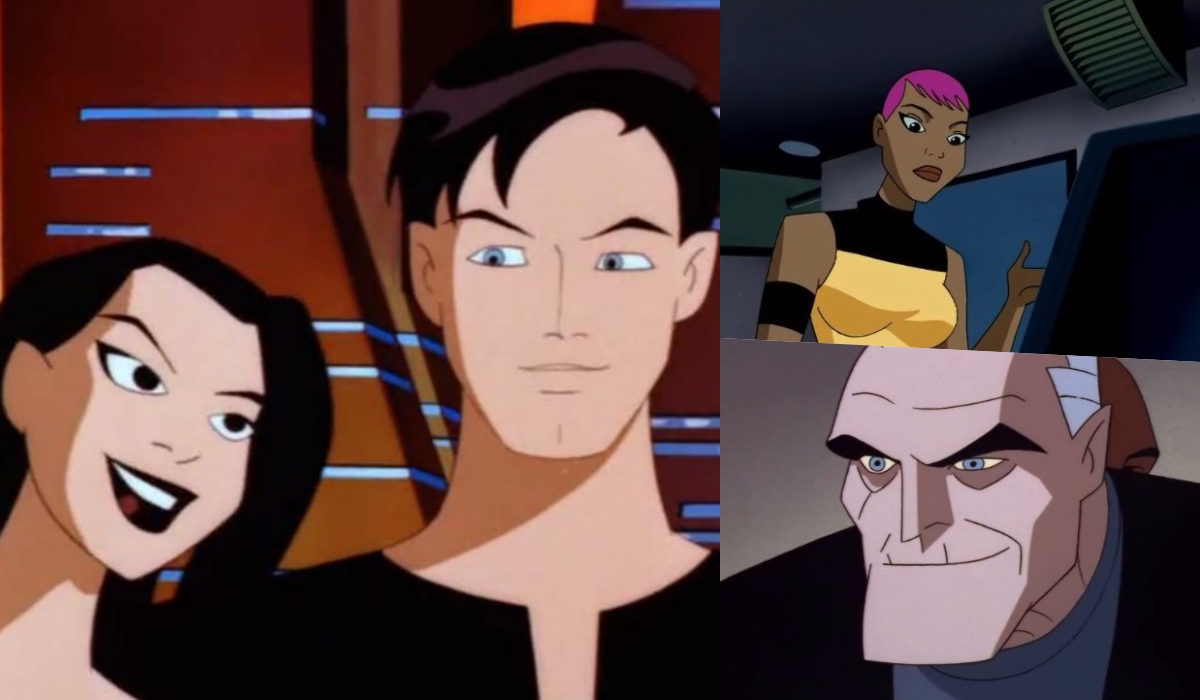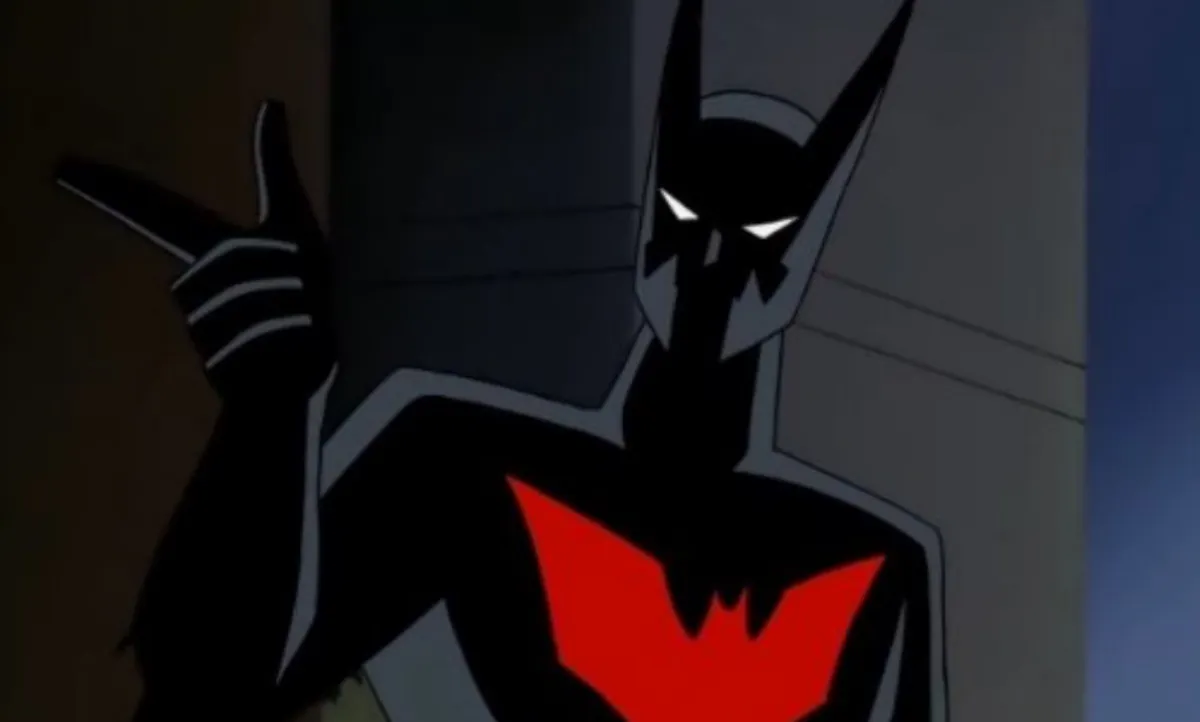I was reminded by the site CBR that, in a few days, it will be the twentieth anniversary of Batman Beyond‘s premiere: January 10, 1999, when I was six years old, only a few months away from seven, and still new to the Batman universe.
A teenage Batman is probably something that would fill a lot of people with dread. In fact, according to CBR, this is how DC animation legend Bruce Timm describes his initial reaction:
“[T]here was some concern that Batman had just been around a little bit too long in its current incarnation, even with the revamped look and everything. The shows did really, really well ratings-wise, but [the WB execs] kinda felt that we’d been riding that train for a long time, and there was also a concern that the show was skewing a little bit older than they would’ve liked, ’cause the advertising is aimed at children. So they were just talking about ways of freshening the show and, y’know, the words ‘teenage Batman’ came up—’Is there some way that we can get a teenager into the Batman suit?’ And, of course, our first reaction was horror. ‘Teenage Batman? Aaaah!!!'”
Yet, considering that Bruce Wayne is, in many ways, an emotionally stunted person, replacing him with a teenager isn’t that much of a stretch, and considering we’d seen a series of teenagers take up the mantle of Robin, it made sense that eventually, a teenager would end up becoming the Bat himself. Timm ended up pitching that the series would take place in the future, and the forty-year time jump allowed the creation of a new character, Terry McGinnis.
In the show, Terry is a former delinquent who just put that life behind him, when, just like every movie ever, his life gets flipped turned upside down when he gets on the bad side of the Jokerz, a gang that stans for The Joker. He leads them out of the city and stumbles onto the territory of Wayne Manor.
Bruce, very old and only just recently retired as Batman, beats up the Joker. However, on account of being probably 70 by now, he collapses of a heart attack. Terry helps Bruce back into his home, but stumbles upon the Batcave. (Stop letting teenagers into your house, Bruce.) Terry is thrown out and returns home to find that his father has been murdered by the gang in retaliation.
Bruce, seeing a pained young kid out for vengeance, takes Terry under his wing and molds him into the Batman of this new era.
Despite the dead parent similarities, the biggest strength the show had was making Terry different from Bruce. He was older when he experienced this trauma, which means he had better ways of dealing with it. He lost his father but still had a mother and younger brother. He also had a social group: his girlfriend, Dana Tan, and his best friend, Maxine “Max” Gibson.

Old Bruce was also a great character because we got to see the lasting effects of Bruce’s growing misanthropic behavior, leaving him to be an old man with no companions but his dog, Ace. He lost all the women he’s ever loved—Zatanna, Selina, Lois, Barbara (gross), and Talia—his friends are gone, and his only real family, Alfred, is long dead. Bruce needs Batman to survive, and no longer being able to physically perform the job, his relationship with Terry gives him a renewed sense of both purpose and human companionship.
The new show kept a lot of the serious tone of Batman: The Animated Series, although it definitely did try to attract the youth crowd, especially in later seasons, but that didn’t mean that it couldn’t still have that undertone of sorrow that permeates the Bat-universe—from Terry losing his father to the show’s bittersweet conclusion to Mr. Freeze, the episode “Heroes” (which offers a really dark version of the Fantastic Four), and then, of course, the hauntingly good Return of the Joker movie, which gives Tim Drake one of the most gruesome storylines in this universe.
That Justice League twist, however, I still have mixed feelings about to this day. In the episode “Epilogue,” it was revealed that Terry is Bruce Wayne’s son, because Amanda Waller decided that there always needed to be a Batman. She took Batman’s DNA (because he left it all over the place) and used future science to rewrite Warren McGinnis’ DNA to make Terry (and his brother) the biological children of Bruce Wayne.
She was even going to get Andrea Beaumont to kill Terry’s parents when he was a kid, just like Bruce, but Beaumont refused.
It was a little too … unnecessarily heavy handed for my taste, especially because it’s not just biology that makes someone your parent, and it seems to erase a bit of what Warren was to Terry, but it’s not harmful to the show’s legacy and how Terry managed to never be totally in Bruce’s shadow as a character. We even saw, in the future, that he told Dana about who he was and planned on proposing—something Bruce wouldn’t have done.
Batman Beyond was a great reminder that you don’t have to let characters stay young forever or constantly revamp them just to keep Bruce Wayne in the Batsuit—or any other hero in theirs. There is value in having these characters age and pass on to younger generations in certain universes, especially a character like Batman, whose greatest gifts lie in his brain.
I also loved that Terry represented the fact that, while Batman would always be a symbol of fear for the criminals of Gotham, the power of Batman lies not in just the trauma, but in the ability to build new relationships. Terry is great because he isn’t Batman. He isn’t going to let the suit be his whole life; he’s going to have friends and relationships and be his own person outside of the suit.
I’d love to see Terry McGinnis in the live-action universe, but until then, we have these awesome three seasons of television and that badass theme song.
What are some of your favorite moments from Batman Beyond?
(via CBR, image: Warner Bros.)
Want more stories like this? Become a subscriber and support the site!
—The Mary Sue has a strict comment policy that forbids, but is not limited to, personal insults toward anyone, hate speech, and trolling.—










Published: Jan 8, 2019 01:31 pm